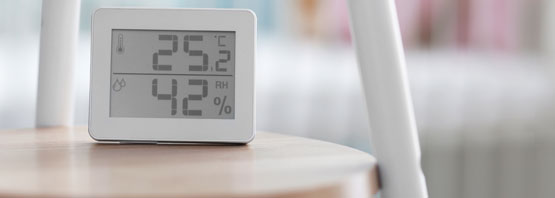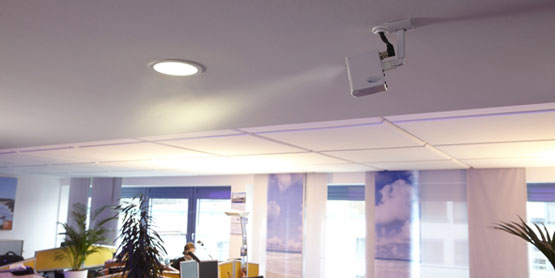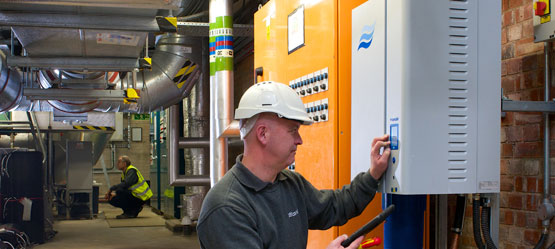
I think my workplace humidity is low
What should I do?
How do I find out what my workplace humidity is?
A hygrometer will measure the humidity level in the air and will typically provide a %RH value, which means % relative humidity (100%RH being air that is saturated and cannot hold any more moisture).
The optimum humidity for human health is 40-60%RH.
A thermo-hygrometer (pictured) will measure temperature as well as humidity.


If nobody at your place of work is able to provide support, the environmental health services of your local authority or your local Health & Safety Executive office will be able to give advice.
What should I do about improving my humidity?
Monitor and record temperature and humidity levels regularly. Bear in mind that indoor humidity will typically be lowest during the winter months when the heating is on.
Talk to work colleagues to see if they are suffering from symptoms such as sore eyes, itchy skin, dermatological complaints, frequent electro-static shocks or respiratory problems. If you are suffering from health problems yourself, having your doctor confirm they may be caused or exacerbated by dry air could also help convince your employer to act.
If your humidity is consistently falling below 40%RH, discuss your findings with your line manager. They should be able to take the matter up with the health and safety representative or the human resources manager. Investigations are likely to also involve the building’s facilities manager, who is responsible for the operation of the climate control equipment.
What are the possible solutions?
For small rooms of up to 1,000m³ mobile humidifiers capable of providing around three litres of humidification per hour may be sufficient to increase the humidity to the recommended level.
For rooms larger than this, or for areas that require a more permanent solution, a commercial humidification system should be considered. These can either provide humidity to a centrally ducted air conditioning system or directly to a room’s atmosphere. Typically these systems inject steam, evaporate moisture from a wetted surface or spray a fine mist to raise the humidity.


Do we already have a humidifier?
It is not unusual for an office building’s humidification system to be turned off in order to save energy or simply because it is in need of maintenance. As building occupants often fail to recognise the drop in humidity levels, and may not associate the symptoms of dry air they are suffering with a low humidity, a humidifier’s deactivation can go somewhat unnoticed.
A building’s facilities manager will be able to verify the situation and confirm whether there is any provision to manage the building’s humidity levels. If the property is being rented, the required humidity is frequently included as part of the tenancy agreement, so it’s worthwhile checking to see if the agreement is being adhered to.
You may also be interested in...
Humidity fights flu
A humidity of 40-60%RH is scientifically proven to quickly inactivate airborne flu and is the ideal indoor humidity level.
Read moreThe science behind a healthy humidity
Check out the many studies that prove the optimal indoor humidity for health is 40-60%RH
Read more
